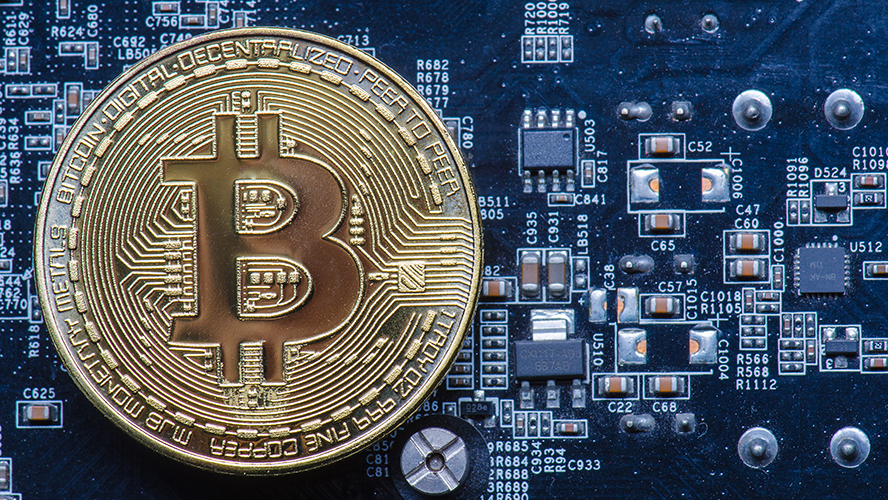On March 2, Orrick had the pleasure of hosting SEC Commissioner Hester Peirce for a fireside chat discussion at our San Francisco office on the state of blockchain and cryptocurrency, the emerging regulatory landscape and her safe harbor proposal. Commissioner Peirce was joined by Orrick partner Ken Herzinger and CipherTrace CEO David Jevans, and moderated by Mark Friedler.[1] To view a recording of the full discussion, please click here. Read on for key takeaways from the panel discussion.

Providing Clarity to the Crypto Community
Commissioner Peirce sees signs of progress at the SEC and believes that her colleagues have the best intentions. She’s hopeful and optimistic that the SEC can continue to make progress and both protect investors and allow innovation to move forward.
Commissioner Peirce believes that regulators have provided more clarity regarding blockchain and cryptocurrency regulation, but there’s a long way to go. Regulators struggle because there’s great variation across digital assets, so it’s hard to lump them together and produce a regulatory framework that works for everything. Furthermore, she acknowledged the fact that often the clarity that comes from the SEC is provided in the format of a facts-and-circumstances discussion, which can be frustrating for people who want to be given straightforward bright line rules. However, she says, U.S. securities laws just typically don’t work that way.
While she is hopeful that the SEC can provide more clarity, she does not know if we will ever get to a point where people feel there are no questions that they need to hire lawyers to help them figure out.
Insights into Commissioner Peirce’s Token Safe Harbor Proposal
Commissioner Peirce said her February 6, 2020 Token Safe Harbor Proposal is solely her own, and her colleagues at the SEC need to be convinced to put it forward as a formal proposed SEC rule pursuant to the SEC’s normal rulemaking process. The theory behind the safe harbor is that the regulatory framework, as currently applied, serves as an obstacle to launching token networks and giving them the time to mature into decentralized networks. Token project creators are afraid that if they launch their network it will be treated as a securities offering. The purpose of the safe harbor proposal is to find a way for people to feel comfortable releasing tokens under an exemption that works for tokens specifically.
Commissioner Peirce explained that one reason you would want securities laws to cover token offerings would be so that the people who are purchasing tokens are receiving the information they need to make good purchasing decisions, so the disclosure requirement was tailored to meet the needs of token purchasers.
Commissioner Peirce published the proposal because she wants to solicit feedback to refine it, and encourages people to contact her with thoughts and ideas to improve upon it.
Section (f) and the Application of the Safe Harbor to Tokens that Have Already Been Distributed
Section (f) of the Safe Harbor provides for how the safe harbor would apply to digital assets previously sold pursuant to an exemption. Commissioner Peirce said those who have already launched and distributed tokens have to think about whether the token sales were done pursuant to an exemption – i.e., tokens sold pursuant to an exemption could rely on the safe harbor to then do a future token distribution. Projects would have to consider on a case-by-case basis if they could take advantage of the safe harbor and if it would be meaningful. For example, if a promoter used the Reg A exemption (which applies to public offerings that do not exceed $50 million in any one-year period), the safe harbor may still be useful for having a wider distribution and allowing the tokens to trade more freely.
Tokens Wrapped in Investment Contracts
Commissioner Peirce highlighted the unique problem that arises with certain token launches, where tokens wrapped in investment contracts are sold, thus creating what looks like a traditional offering, but then when the tokens start being used in the network they no longer look like securities. At that point, it is a stretch to argue the securities laws should still apply.
Interestingly, in the SEC v. Telegraph case currently pending before Judge Kevin Castel in the U.S. District Court for the Southern District of New York, the SEC Enforcement Staff is arguing that the Judge should conflate the investment contract and proposed token launch and view the sale of an investment contract and subsequent token distribution as “one transaction.” Enforcement and Commissioner Peirce do not appear to be on the same page regarding this issue.
“Network Maturity” and the Meaning of “Decentralized” and “Functional”
Commissioner Peirce acknowledged that she needed to do more work defining what it means to be “decentralized.” She thinks it will be easier to tell if a network meets that definition after having been in existence for three years.
She also noted that the functionality test is there because the safe harbor is also trying to protect networks that are intended to remain centralized. There are companies that have created token-based economies that exist on centralized networks. She pointed to the “no action” letters issued to Pocketful of Quarters and TurnKey Jet. In her view, issuing no action letters about things that are clearly not securities is not helpful, because the letters contain conditions, thereby placing constraints on the ability of the companies to run their networks in certain ways.
Section (a)(4) and the Liquidity Requirement
Commissioner Peirce noted that some had suggested that it may be premature to assume that a secondary market would enable trading of a nascent token, and that, initially, the liquidity may need to be found elsewhere. She indicated that some liquidity could be found through non-U.S. decentralized exchanges which could also play a role in creating liquidity in the beginning stages of a token network. Only, later would the token be traded on an exchange with an intermediary that could then conduct the AML/KYC requirements. The issuer could also find ways to create liquidity in the beginning, which is something she has seen centralized projects do. That said, there are clearly unanswered mechanical questions about how a token promoter would generate liquidity.
Section (b)(6) Disclosures Regarding the Initial Development Team and Certain Token Holders
Commissioner Peirce indicated that the type of person covered in Section (b)(6) of the safe harbor is similar to those individuals who fall under Section 16 of the Securities Exchange Act of 1934. Project teams should ask themselves, when they talk about their project, who do they say is working on the project? The people that are being advertised are likely to be the ones who should be disclosed. She wants to be sure that project teams are not intentionally hiding a team member who has been previously arrested for securities fraud, for example.
Stablecoins
Commissioner Peirce said stablecoins are a unique category of tokens, but there is enough variation among them that they may not all fall into a single previously established category. Each one should be judged on its own facts, and there are potential implications for the securities laws depending on how they are set up. They could function like securities or they could function like money market funds. Commissioner Peirce encouraged people interested in launching a stablecoin to think through the implications and reach out to the SEC and other regulators.
Educating Lawmakers and Regulators
Commissioner Peirce said lawmakers and regulators are extremely busy and they have to deal with a wide variety of different issues. The crypto community should try to educate regulators and help them understand the basics of the technology; creating familiarity amongst regulators will generate better regulation. Technologists should not expect regulators to know as much as them, but they can help regulators get to a place of understanding, where the technology does not seem as scary as it might otherwise.
Changing the Accredited Investor Regime
Commissioner Peirce noted that the SEC has issued proposed amendments to expand the definition of “accredited investor” in Rule 501(a) of Regulation D and soliciting comments on whether the accredited investor regime should change. [The formal rule proposal amending Regulation D was published on March 4 which followed the publication of the Commission’s concept release in June]. While the amendments propose modest changes, they raise questions about broader changes that would open up accredited investor status to a wider range of individuals. Personally, she agrees that the correlation currently in use today – i.e., the use of wealth and income as a rough proxy for sophistication – is not perfect. There are also liberty concerns with the regime: people work very hard to earn their money and then the government places constraints on how they can spend it; however, she recognized that issue runs throughout our securities laws. Improving upon the accredited investor regime will help the problem, but Commissioner Peirce is doubtful we will see a radical shift in the accredited investor regulations.
[1] Commissioner Peirce prefaced her remarks by stating that the views she expressed were her own and do not necessarily represent those of the Securities and Exchange Commission or her fellow Commissioners.

